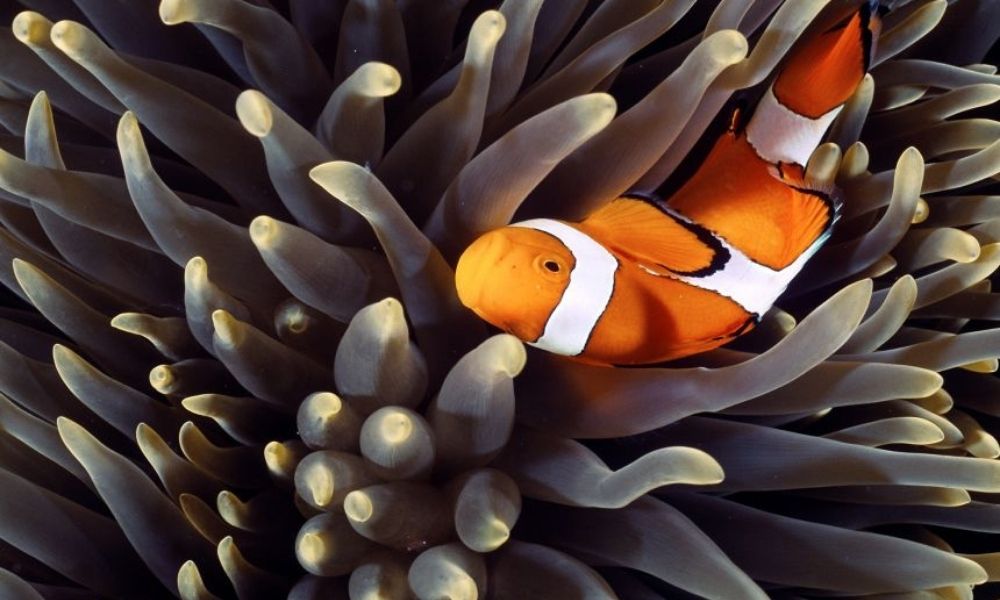Symbiotic relationships are a common occurrence in the natural world, where two or more species interact with each other in a mutually beneficial way. These relationships can be seen in various forms, from the microscopic level to the grand scale of entire ecosystems. They play a crucial role in maintaining the balance and diversity of life on our planet. In this article, we will explore the concept of symbiotic relationships and delve into some fascinating examples of how different species coexist and thrive together.
Contents
Understanding Symbiosis
The term “symbiosis” was first coined by the Swiss botanist, Albert Bernhard Frank, in 1877. It is derived from the Greek words “sym” meaning “together” and “biosis” meaning “living.” Symbiosis refers to a close and long-term interaction between two or more different species, where at least one species benefits from the relationship. The other species may also benefit, or they may be unaffected or even harmed by the interaction.
Symbiotic relationships can be broadly classified into three types: mutualism, commensalism, and parasitism. In mutualism, both species involved in the relationship benefit from each other. In commensalism, one species benefits while the other is neither harmed nor benefited. In parasitism, one species benefits at the expense of the other, which is harmed in the process.
Read:What does macek consulting llc sell?The Benefits of Mutualism
Mutualism is the most common type of symbiotic relationship, where both species involved benefit from the interaction. It is a win-win situation for both parties, as they rely on each other for survival and reproduction. Mutualistic relationships can be seen in various forms, such as pollination, seed dispersal, and protection from predators.
One of the most well-known examples of mutualism is the relationship between bees and flowers. Bees collect nectar from flowers to make honey, while also pollinating the flowers in the process. This pollination is crucial for the reproduction of flowering plants, making bees an essential part of the ecosystem. In return, the flowers provide bees with a source of food, ensuring their survival.
Another fascinating example of mutualism is the relationship between ants and aphids. Ants protect aphids, small insects that feed on plant sap, from predators and parasites. In return, the aphids secrete a sugary substance called honeydew, which the ants feed on. This mutually beneficial relationship allows both species to thrive and play a vital role in the ecosystem.
The Advantage of Commensalism
Commensalism is a type of symbiotic relationship where one species benefits, while the other is neither harmed nor benefited. It is often seen in situations where one species uses another for transportation, shelter, or food without causing any harm. While the relationship may not be as mutually beneficial as in mutualism, it still provides an advantage to one of the species involved.
Read:What a wonderful world sam cooke chords?A classic example of commensalism is the relationship between cattle egrets and grazing animals such as cows and buffaloes. These birds follow the grazing animals, feeding on the insects that are disturbed by the movement of the animals. The cattle egrets benefit from this relationship by getting a steady supply of food, while the grazing animals are unaffected by their presence.
Another interesting example of commensalism is the relationship between remoras and sharks. Remoras are small fish that attach themselves to larger marine animals, such as sharks, using their suction cup-like dorsal fins. They feed on the scraps of food left behind by the shark, without causing any harm to the host. This allows them to travel long distances without expending much energy, while the shark is unaffected by their presence.
The Dark Side of Parasitism
Parasitism is a type of symbiotic relationship where one species benefits at the expense of the other, which is harmed in the process. It is a one-sided relationship, where the parasite benefits while the host suffers. Parasites can be seen in various forms, from microscopic organisms to large animals.
A well-known example of parasitism is the relationship between tapeworms and their hosts. Tapeworms are parasitic flatworms that live in the intestines of vertebrates, such as humans and animals. They feed on the nutrients from the host’s food, causing malnutrition and other health problems. In some cases, tapeworms can grow up to 50 feet long, causing severe damage to the host’s digestive system.
Read:What one might say before conforming nyt?Another example of parasitism is the relationship between cuckoo birds and their hosts. Cuckoos lay their eggs in the nests of other bird species, such as warblers and finches. The cuckoo chick hatches first and pushes the host’s eggs out of the nest, ensuring that it receives all the food and attention from the host parents. This behavior is harmful to the host’s offspring, as they do not receive any care or food from their parents.
Symbiotic Relationships in the Ecosystem
Symbiotic relationships are not limited to individual species but can also be seen at the ecosystem level. Ecosystems are made up of various species that interact with each other in complex ways, forming a delicate balance. Any disruption in these relationships can have a significant impact on the entire ecosystem.
One of the most well-known examples of symbiosis at the ecosystem level is the relationship between coral reefs and the algae that live within them. Coral reefs are made up of tiny animals called polyps, which provide shelter and nutrients to the algae. In return, the algae produce food through photosynthesis, which is essential for the survival of the coral. This symbiotic relationship is crucial for the health and growth of coral reefs, which are home to a diverse range of marine species.
Another fascinating example of symbiosis at the ecosystem level is the relationship between plants and mycorrhizal fungi. Mycorrhizal fungi form a symbiotic relationship with the roots of plants, providing them with essential nutrients such as phosphorus and nitrogen. In return, the plants provide the fungi with sugars produced through photosynthesis. This mutually beneficial relationship allows plants to thrive in nutrient-poor soils, while the fungi receive a steady supply of food.
The Importance of Symbiotic Relationships
Symbiotic relationships play a crucial role in maintaining the balance and diversity of life on our planet. They allow different species to coexist and thrive together, ensuring the survival of entire ecosystems. Without these relationships, many species would struggle to survive, leading to a domino effect on the entire ecosystem.
One of the most significant benefits of symbiotic relationships is their role in pollination and seed dispersal. Many plants rely on animals for pollination, ensuring the production of fruits and seeds. Similarly, seed dispersal by animals allows plants to spread and colonize new areas, contributing to the diversity of plant species in an ecosystem.
Symbiotic relationships also play a crucial role in nutrient cycling and decomposition. Many species, such as bacteria and fungi, break down organic matter, releasing essential nutrients back into the soil. This process is vital for the growth and survival of plants, which form the base of the food chain.
Moreover, symbiotic relationships also provide protection from predators and parasites. Many species form symbiotic relationships with other species to deter predators or to receive protection from parasites. This allows them to thrive and play their role in the ecosystem without being constantly under threat.
Conclusion:
Symbiotic relationships are a fascinating aspect of the natural world, where different species interact with each other in a mutually beneficial way. They play a crucial role in maintaining the balance and diversity of life on our planet, from the microscopic level to the grand scale of entire ecosystems. Understanding these relationships is essential for our understanding of the natural world and the importance of preserving it for future generations.
As we continue to explore and learn more about the complex web of symbiotic relationships in the natural world, we must also recognize the impact of human activities on these delicate ecosystems. It is our responsibility to protect and preserve these relationships to ensure the survival of all species on our planet.
So the next time you see a bee pollinating a flower or a bird perched on the back of a grazing animal, remember that it is not just a random occurrence, but a fascinating example of symbiosis in action.









